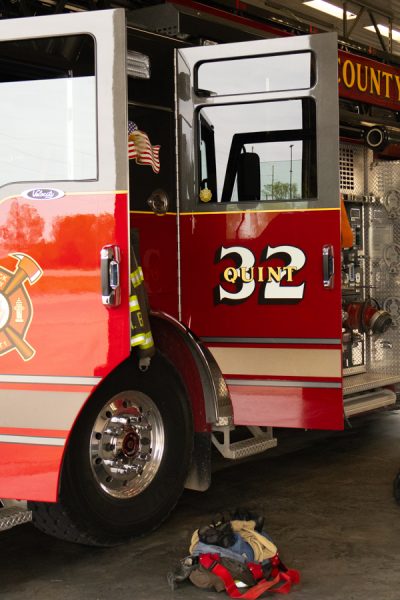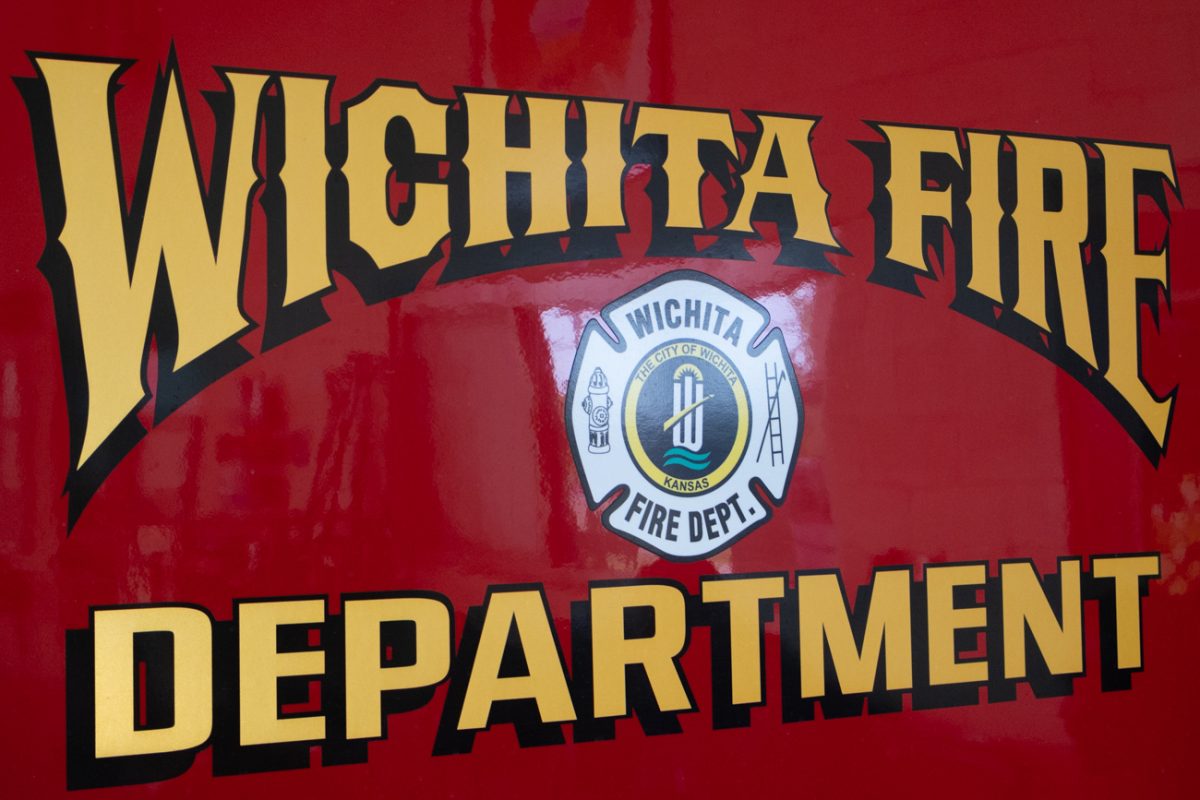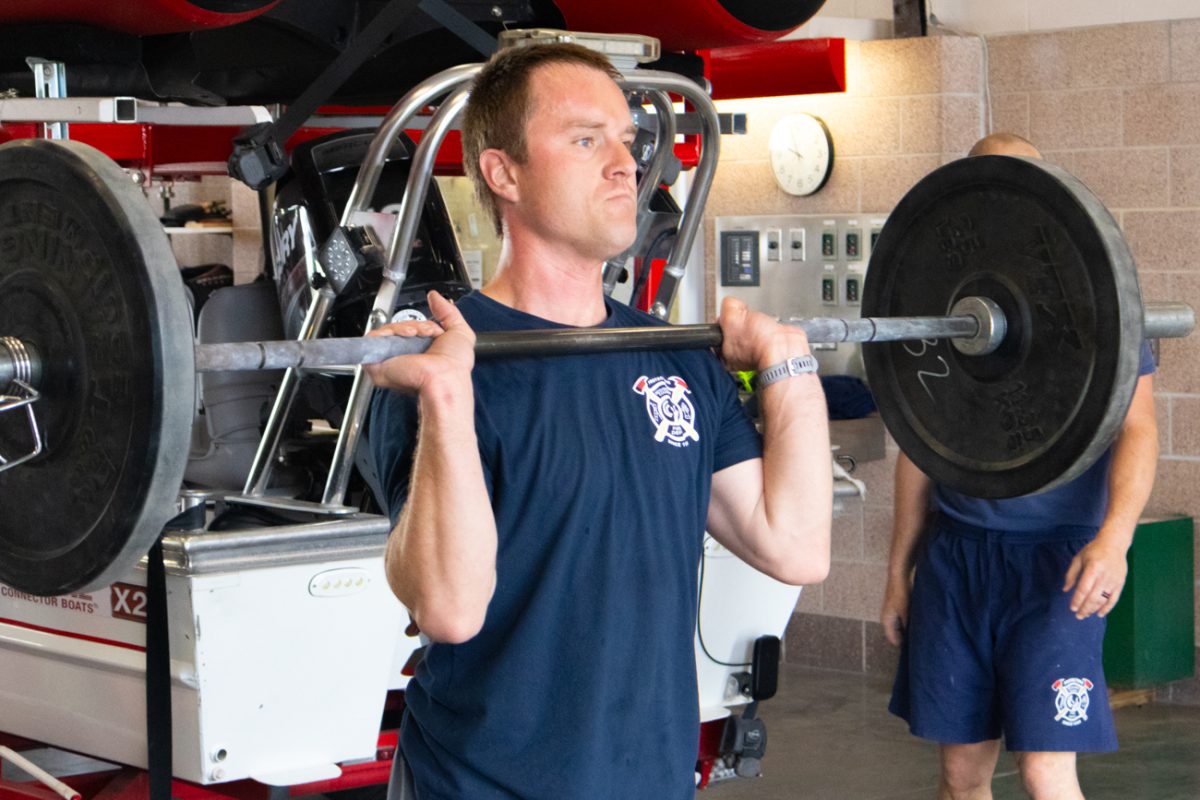Crew members of Wichita Fire Department Station 7 and Sedgwick County Fire Department District 1, Station 32 don’t have a lot in common. They both serve different communities, they handle and deal with different situations and they’re managed by different chiefs and captains. But one thing the firefighters of both departments say they love about being in the fire department is helping people. Both groups said they typically see people on their worst days, and they get to help make their lives easier.
“In my position, I like being able to help train the guys to be ready for whatever comes our way and to be able to help somebody when they need it, or be able to solve a problem that comes our way and be able to mitigate that no matter what it is and make sure we’re all ready to go to do that job,” Captain Gee Jaso of Sedgwick County Fire Station 32 said.
The territory
Sedgwick County Fire District 1, Station 32 described their jurisdiction and communities as a doughnut, and the city of Wichita is the center of that doughnut. Fire District 1 serves the area in the bounds of Sedgwick County, but outside of the city. Through mutual aid agreements, they assist in fires in Wichita and other local areas such as Newton, Valley Center, Viola, Goddard and more. They respond with those other community and volunteer fire departments.
Sedgwick County Fire District 1 Station 32 said that the Wichita Fire Department often deals with smaller grass fires from small burns within the city, while Sedgwick County has larger grass fires in fields and properties outside of cities and towns.
But, for the most part, the Wichita Fire Department handles house and structural fires. They deal with anywhere from an 800-square-foot house to an 18-story high-rise. They have a wildland team and national firefighters that assist with large fires across the nation as well. Wildland teams are teams of firefighters that are called out to large fires that can plague places like national forests. They can also provide relief in natural disasters like floods and hurricanes.

The call volume of the Wichita Fire Department is much greater than that of Sedgwick County due to it being located in the densely populated city. They not only get fires, but additionally medical calls and car wrecks.
The Wichita Fire Department has two tenders total – the trucks that hold water to go out to rural and country areas to assist with fires. They are not used much, because they have access to fire hydrants being in the city. However, Sedgwick County Fire Department has a tender at virtually every one of their nine stations, because they don’t often have access to hydrants.
The nearest Wichita Fire Department Station to Wichita State University is station 10 near 21st and Hillside.
The ins and outs: internal structure
Both departments run a 24-hour on, 48-hour off shift throughout the week.
The daily routine of the Wichita Fire Department involves getting the fire trucks ready by 7 a.m., talking about what the day looks like and going to the gym or doing a workout at the station around 8 a.m. Around 4 p.m., they eat together as a crew, then they clean up and hang out until bedtime at 10 p.m. They get woken up often through the night to deal with emergencies as they arise.
A normal day for Station 32 is breakfast and working out in the morning from 8 a.m. to 10 a.m. Firefighters take an hour and a half lunch most days. The city of Wichita and Sedgwick County Fire Department are not provided food at the station; it comes out of their pocket and they usually pitch in for every meal.
Crew members of Station 32 take a safety nap around noon, and train from 1 p.m. to 4 or 5 p.m. They often do rescue training, which they sometimes do at the salvage yard, extrication training, which is cutting cars, force doors, or fire training, like pulling lines or spraying water.
At Station 32 specifically, Chief Don Boone or Jaso choose the workout in the morning that the whole crew does together.
The Wichita Fire Department does daily training the same as the Sedgwick County Fire Department, but they get to choose their own workouts. Some stations work out together, but they’ve found that doing their workouts better serves the crew members with bad shoulders or knees.
“We have a pretty young department, so most crews right now, everyone is working out pretty good in those morning hours,” Jaso said.
They also have to participate in mandatory quarterly training similar to the medical units of Sedgwick County to make sure they stay keen on the job.
The Sedgwick County Fire Department gets heavier bookwork and job-related training because they handle fewer larger emergencies than the Wichita Fire Department.
On the weekends, Station 32 likes to finish up their station duties on Saturday to relax and have a sort of “Sabbath” on Sunday. These duties include detailing and cleaning the trucks, mowing and deep cleaning the station. Station 32 crew and other crews in Sedgwick County have their families come up most Sunday nights for a family dinner. This schedule is often disrupted because they may get called out, or have a really busy night or day due to bigger or longer fires. Most of the time, they don’t get to sleep all the way through the night, either.
Hiring, required trainings and certifications
Certain training is required to be renewed every one to three years as a firefighter. This includes medical training, hazardous materials training, and more. A degree is not required to be a firefighter anymore. Twenty or so years ago, it was preferred, but it’s now considered extra points toward better pay. Gee Jaso of Station 32 graduated from Wichita State with a bachelor’s degree in sociology before working in the department.
“You needed an edge to get hired onto the department,” Jaso said. “If you were just like everybody else, you weren’t going to get in because we had over 300 people trying to get on.”
Firefighters must have a high school diploma, driver’s license, and an EMT license and must be at least 18 years of age. Further training is provided on the job and at the academy.
“There’s not a lot of people knocking at the door to be a fireman,” Station 32 Lieutenant Tyler Brenneman of Sedgwick County Fire Department said. “I think our restrictions to get people in the door … we had to loosen them up a bit to allow them to apply.”
Elizabeth Snow, the Fire Chief of the Wichita Fire Department, was the first female fire chief in Wichita’s history. There are five females in the Sedgwick County Fire Department, as well. Both departments are based on equal opportunity and the men of Station 32 say they don’t look at them any differently and noted that they often bring another point of view on the job.
“When you get hired, there’s a three-month academy and at the end of that academy, it doesn’t carry your age, your race, gender or anything,” Sedgwick County firefighter Austin Morrow said. “This is what the standard is, and you can do it or you can’t do it.”
Call in the clowns: fire prevention and safety education
The clown program through Sedgwick County Fire Department staffs firefighters to dress as clowns and go to schools to teach about fire prevention and fire safety. Media and communications for Sedgwick County based in downtown Wichita also come to the stations to make short videos on fire prevention and safety for the public. The Wichita Fire Department does a lot of its public education and updates at city meetings every month.
“I enjoy the engagement we have in the firehouse and outside in the community,” Wichita firefighter Arnulfo Avitia said. “We reach a lot of different places, whether it’s the communities in schools, the elderly, not just responding for emergencies only, we have different departments that educate the community about fire about other safety, just getting out to help anyone we can.”
Burning passion: how firefighters found their callings
There were numerous reasons listed by both Sedgwick County Station 32 and Wichita Station 7 crew members for becoming firefighters. Those include: getting to help people, getting paid to work out, camaraderie , the schedule, gaining a second family, more quality time with their own family, mental health benefits, fellowship, prayer, and more.
For firefighters like Jared Kornfeld, past experiences with firefighters inspired him to pick up the torch and serve his community in the same way.
“Little kid answer I know, but I have wanted to be one since I was three years old,” Kornfeld said. “We were in Seattle on one of the monorails, we had (a) power failure (and) ended up having to call the fire department and evacuate everyone down the ladder. So, I remember that clearly as a little kid. Firefighters carried me down, that kind of started the, you know, all about firemen from then on out.”
Most firefighters are able to pursue other passions, whether it’s a second job or a hobby.
“Pretty much every firefighter has a second job,” Kornfeld said. “They mow lawns, work at a body shop … everybody does something.”
Realities and falsehoods
Both Sedgwick County Fire Department and Wichita Fire Department say that some misconceptions about firefighters are true, and some just aren’t. Among the truth, they said they do indeed get calls to rescue cats out of trees.
“My first call on this job was getting a cat out of a tree,” Brenneman said with a laugh.
Untrue perceptions include laziness, that all firefighters are “hot” or “handsome,” the workouts and training aren’t hard, that firefighters get calls the whole shift and have no downtime, and that you have to be “big” and in shape.
“Everybody may think we encounter straightforward calls or we’re just a bunch of dumb firemen, but there’s a lot of smart people on this job that know how to do different things,” Wichita firefighter Peter Nelson said. “We are definitely one of the best fire departments in the country, a lot of people come to us for a reason.”
Not every call is interesting; they get a lot of false alarms or they assist paramedics or police departments on a call.
Wichita Fire Department Lieutenant Corby Welch says with Station 7 being close to the outskirts of Wichita, they assist Sedgwick County Fire some, but for the most part, stick with the city calls. He described how both fire departments have respect and trust with each other in addition to joking around like they do in their separate stations, and understand that when there is a job to be done, they will work together when needed without hesitation.
“We know their strengths and they know our strengths, so we tend to just naturally gravitate towards those roles when we run calls together,” Welch said.





